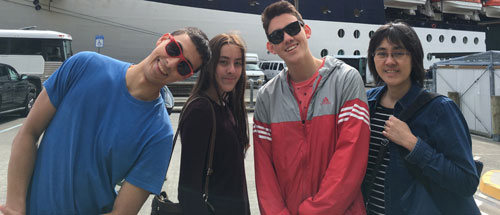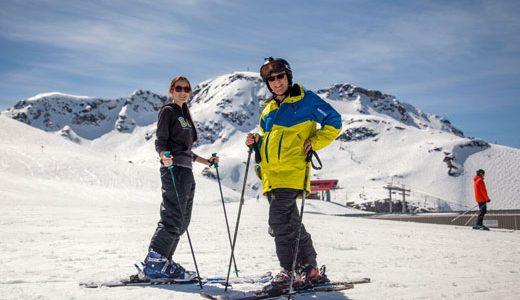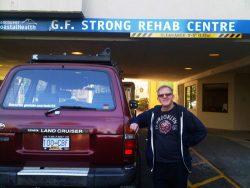VIDEO: “They became my extended family”
As a clinical nurse educator at VGH, Doris Bohl knows the significance of patient and family care. She just never imagined her message about treating patients like family would ever hit so close to home.
On October 5, 2014, her husband Rainer, 55, woke her. “I’m dizzy,” he said. “I can’t walk properly.”
“Smile,” she said. His smile was crooked. Recognizing the F.A.S.T. signs of stroke, she stayed calm. “You’re having a stroke. I’m calling the ambulance.” It was 2:05 am.
By the time Rainer got back into bed, his entire right side was paralyzed. “I was pretty scared,” remembers the engineer, a self-described hard-driving guy used to skiing Whistler’s Double Blacks and hiking to the summit of Black Tusk at Garibaldi.
Seamless care from home to hospital
“From the moment the ambulance arrived at our home, the care was seamless,” says Doris, this year’s recipient of the Bonnie Cart Leadership Award.
When they reached VGH, Rainer was wheeled in for a CT scan immediately. By 3:15 am, he had been assessed and Dr. Oscar Benavente of the VGH Stroke Service had arrived.
It was an ischemic stroke (blocked artery to the brain) and he received tPA, a protein that breaks down blood clots. By 6:30 am, he was in the Neuro ICU. Later, he was transferred to the Stroke Unit.
“I couldn’t eat or pee without help. I was slurring like I’d had 10 beers,” Rainer recalls. “I felt quite vulnerable. Would I talk properly again? Would I be able to read a book?”
Within three days of his stroke, a tiny bit of movement came back giving Rainer hope.
Hope builds at GF Strong
Rainer began the next stage of his recovery at the GF Strong (GFS) Rehabilitation Centre. Admitted by Dr. Jennifer Yao, he undertook intensive therapy with the Acquired Brain Injury (ABI) program.
He supplemented his ABI therapy participating in the VCH clinical trial known as DOSE (Determining Optimal Post-Stroke Exercise), and he started walking and talking again. “My speech went from 10 beers to two,” he jokes.
On December 3, he walked out of GFS. And, just six months following his paralyzing stroke, Rainer was skiing again.
Thank you from the Bohl family

“As a family member, I saw care from the other side and how much quality and kindness makes a difference,” says Doris Bohl, pictured with daughter Victoria and sons Oliver and Winston.
In August 2016, Rainer had his last follow-up appointment at GFS. Speaking about his stroke, even two years on, still chokes him up.
“I remember just lying there like a starfish.” The phone goes silent while he composes himself. “It’s not just the physical needs, the emotional needs matter too. It means a lot when health care workers empathize with you. In some ways, they became my extended family,” he says.
“From the doctors to the folks who made my bed and scheduled my appointments, what really comes to mind is the compassion shown me. I’m so grateful for everyone’s commitment to helping me return to the best I can be.”
As a small token of thanks, the Bohl family dedicates the following video to all who contributed to Rainer’s recovery.


